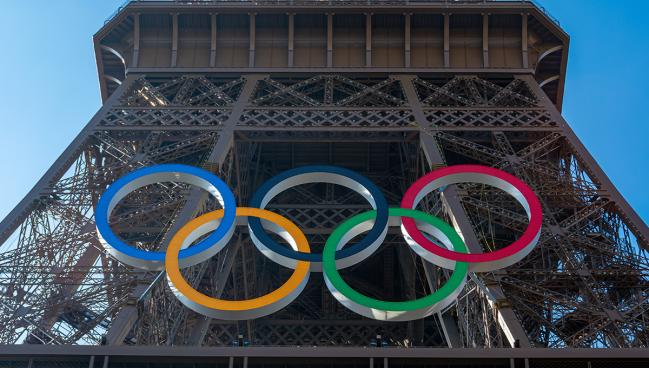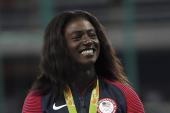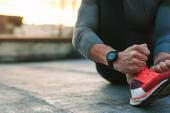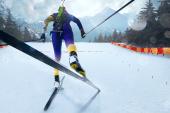Olympic Hearts: Screening for CVD Among Team USA’s Athletes
In interviews with TCTMD, US cardiologists in that special role say care has shifted from paternalism to shared decision-making.

As the Olympic Games gain steam in Paris, France, a small battalion of doctors, athletic trainers, physiotherapists, chiropractors, and psychologists are keeping close watch over the 850 athletes participating in the Olympic and Paralympic Games.
The USA delegation, with 593 athletes, is the largest at this year’s event. In addition to Chief Medical Officer Jonathan Finnoff, DO (University of Colorado, Colorado Springs), there are 30 United States Olympic and Paralympic Committee (USOPC) sports medicine staff members accompanying the team, along with another 28 allied medical professionals to round out care.
Cardiologists Aaron L. Baggish, MD (Université de Lausanne/Centre Hospitalier Universitaire Vaudois, Switzerland), and Ankit B. Shah, MD, MPH (Georgetown University School of Medicine, Washington, DC, and Sports & Performance Cardiology, Chevy Chase, MD), while not joining the team in Paris, were charged with screening all athletes that came through the USOPC for any signs of cardiovascular disease. In separate interviews, each described for TCTMD some of what that screening and care entails.
* * *
TCTMD: Dr. Baggish, can you tell me about your role with the USOPC?
Baggish: The USOPC training facilities, of which there are three, are located in Colorado Springs, which is the main one, and Lake Placid, New York, and Chula Vista, California. These are training facilities open to all US team athletes. When they come to these training centers, they all undergo a typical preparticipation medical process, which involves personal and family medical history, a physical examination, and a 12-lead ECG. We review the historical information, and if there are any physical exam findings, we review those, too. We read all the ECGs for the athletes and in any situation where there's something concerning, we work with the athletes and their providers of choice, either ourselves or their established doctor or cardiologist, to figure out what needs to be done. . . . A lot of the individual-sport athletes—boxers, wrestlers, some track and field athletes, endurance athletes that are not part of track and field, and triathletes—rely heavily on the training centers. Some, but not all, of the team sports do a lot on their own.
Shah: It encompasses everything you can imagine. There are many nuances in the clinical care of athletes but also there's a whole other aspect than just patient care. There's the team behind the team, for instance. You have the athlete, but you have the head team physician, the athletic trainer, agents, and coaches. When you go to a national-team level, it becomes a little bit more decentralized. There are swimmers all over the country. Some are in college, some are practicing on their own, so medical care and access points are very different compared to a professional or college sports team. Really, the key to providing good care from a national team perspective is establishing a comprehensive multidisciplinary medical team with good communication from across all disciplines (physical therapists, athletic trainers, massage therapists, physicians, coaches, etc) where any one of the providers can speak up and say, “Hey, look, this athlete expressed some concerning symptoms or mentioned a concerning family history” and the athlete is set up to meet with the appropriate provider from there.
We also have athletes with either known symptoms or known disease. In that world, it’s me talking with them and trying to coordinate local care. If it’s more concerning, they'll fly out to my clinic where we do the comprehensive workup to get them back with a good plan.
The last part is just being available. I’ve gotten calls from some of our team doctors when they were in Korea, for example. They said, “One of our athletes had chest pain and was in an emergency room—what should we do with this data?” It’s a middle-of-the-night phone call trying to make sure the athlete's safe, let him or her hopefully finish their meet, and then get them to our clinic once they are back in the US to complete the workup and treatment plan.
TCTMD: What types of cardiac conditions are you looking for?
Baggish: The younger the athletes, the more relevant congenital is. But we have athletes into their late 30s and 40s in some sports, even older in others, such as equestrian. We do still think about things like hypertension and dyslipidemia. We’ve also have the typical athlete-related things—fainting episodes, syncope, palpitations—that happen not infrequently. We’ve picked up a couple of cases of genetic heart disease, which required long conversations about the risk and benefits of continued participation. It’s been a fairly busy service.
Shah: At this age, it's most commonly congenital or genetic and not acquired disease. The data aren’t from US Olympic-level athletes, but around 0.3% of athletes screened will have some form of cardiovascular disease that puts them at risk. Unfortunately, being an athlete doesn’t make you immune from cardiovascular disease so we need to remain diligent in our care of athletes including emergency action planning and readily available AEDs.
TCTMD: Why is it important to have a sports cardiologist involved in the care of these athletes?
Baggish: A competent sports cardiologist will always start with the question, “What sport does the athlete do and does that heart look like what I would expect to look like for that sport?” The heart can remodel or change size and shape and function in different ways depending on what type of sport the athlete does. We look for concordance, meaning the heart should look like what it’s supposed to look like for the sport. If it doesn't, that's a red flag. The other part of it is understanding the specific risks of each type of sport. Obviously, the risks of being a marathon runner are probably, if not certainly, different than the risk of being a golfer. That’s part of our risk calculus when we're talking about their individual decisions.
TCTMD: What are some of the challenges unique to screening athletes?
Shah: How the heart is remodeled is very sport specific. I've come across two ways where physicians and cardiologists get into trouble working with elite athletes. The first is they apply criteria that are meant for the general population to these elite athletes. That leads to a lot of overdiagnosis and inappropriate disqualification. We will routinely see these athletes for a second opinion, and even if we can reverse the diagnosis and say this is all normal athletic findings, you cannot always reverse the mental health aspect of things. In sports, where getting gold or not medaling can be decided by a couple of milliseconds, we need to make sure we are not harming the athletes.
The flip side also occurs when you’re not familiar with athlete- or sport-specific data. You may mistakenly call bizarre findings normal, thinking that they’re an otherwise healthy athlete and this is probably normal. And in that scenario, you might be missing a diagnosis that can be very dangerous.
TCTMD: If something is found during screening, what is that conversation like today? And how does it differ from conversations in the past?
Baggish: This is the most exciting thing that’s happened in my career as a sports cardiologist. We’ve moved away from paternalistic eligibility determination to what we call a shared decision-making model where the doctor, the athlete, and whoever else is important in the athlete's life—their stakeholders, whether that’s family members, coaches, athletic trainers, in some cases people who organize governing bodies—get together and discuss what's known and what's not known, and then make a decision that's commensurate with the athlete's preferences and values. It’s a very exciting move in the right direction and one that I strongly support.
Shah: Nowadays, we’re engaging a lot more with the athlete, the family, and their wishes, which is the right thing to do. From the medical side of things, we have to make sure that all of our colleagues are fully aware that the landscape has changed and that with shared decision-making more athletes with cardiovascular disease will be playing professional or Olympic-level sport.
Baggish: In the past, the [decision on eligibility and disqualification] was exclusively paternalistic. It was a list of diagnoses and if you had [certain conditions], regardless of who you are, your age, your risk factors, you were done. In 2015, with some conditions, we started to endorse more flexibility because we were, for the first time, seeing data that the risk associated was lower than previously thought. As a sneak peek, later this year we’ll have the next decade’s update—I’m one of the writing committee chairs—and we endorse a shared decision-making model across essentially all forms of heart disease. There's no longer this concept that if you've got it, you're done. Now, if you've got it, how risky is it? What will lower the risk? And what do you want to do with this information? It's a very exciting move forward.
TCTMD: Can you tell me a little about the Outcomes Registry for Cardiac Conditions in Athletes (ORCCA) study?
Baggish: We are enrolling elite-level athletes, which we define as either professional, national-caliber, or collegiate level, who have a heart diagnosis. We're trying to understand how that affects them. We want to know if that gets in the way of their ability to compete, how that changes their mental health, their well-being, their finances, everything. We want to understand how this shared decision-making process is helping, or perhaps not helping. Among Olympians enrolled in this now, we have professional athletes from most of the big US sport leagues. We just recently expanded into Canada, which is an active site, and Australia is coming online very soon.
TCTMD: Do you enjoy watching the Games?
Baggish: I love them. I'm really delighted not to be in Paris, but I love watching them. I love the story. I love our athletes, many of whom I've gotten to know over the years. It's really fun to see them show up and put their best forward.
TCTMD: Any favorites among them?
Baggish: I have favorite sports. I don't talk about individual athletes, and from a medical perspective, I hate to choose favorites, but it should come as no surprise that I absolutely love the endurance sports. I saw the women's mountain-bike race yesterday, and we had an outstanding silver medal, which the first silver medal we ever had in mountain biking. That was really exciting to watch.
Shah: It is always special to work with athletes of this caliber. The athletes are really fun to engage with and have a lot of good questions about heart health. Having a good understanding of how hard they train, what they have to sacrifice to get where they are, it is just fun to watch them make it look so easy. Having worked with and getting to know the athletes, I root for the underdogs hoping they pull off an upset and for the ones expected to win. It is a really an incredible few weeks every 4 years.
This interview has been redacted and edited for readability.
Michael O’Riordan is the Managing Editor for TCTMD. He completed his undergraduate degrees at Queen’s University in Kingston, ON, and…
Read Full Bio




Comments